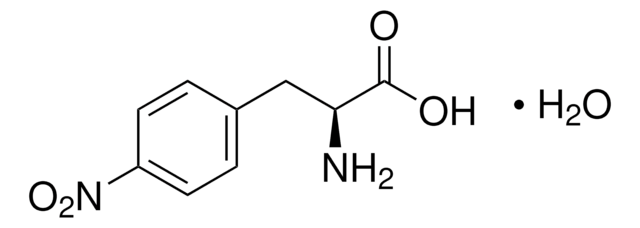320501
Schwefelsäure
ACS reagent, 95.0-98.0%
About This Item
Empfohlene Produkte
Qualität
ACS reagent
Dampfdichte
<0.3 (25 °C, vs air)
Dampfdruck
1 mmHg ( 146 °C)
Beschreibung
Free from suspended or insoluble matter
Nominally 95-98% H2SO4
Assay
95.0-98.0%
Form
liquid
Glührückstand
≤5 ppm
Farbe
APHA: ≤10
pH-Wert
1.2 (5 g/L)
bp
~290 °C (lit.)
Dichte
1.840 g/mL at 25 °C (lit.)
Anionenspuren
MnO4- reducers: ≤2 ppm
chloride (Cl-): ≤0.2 ppm
nitrate (NO3-): ≤0.5 ppm
Kationenspuren
As: ≤0.01 ppm
Fe: ≤0.2 ppm
Hg: ≤5 ppb
NH4+: ≤2 ppm
heavy metals (as Pb): ≤1 ppm
SMILES String
OS(O)(=O)=O
InChI
1S/H2O4S/c1-5(2,3)4/h(H2,1,2,3,4)
InChIKey
QAOWNCQODCNURD-UHFFFAOYSA-N
Suchen Sie nach ähnlichen Produkten? Aufrufen Leitfaden zum Produktvergleich
Signalwort
Danger
H-Sätze
Gefahreneinstufungen
Eye Dam. 1 - Met. Corr. 1 - Skin Corr. 1A
Lagerklassenschlüssel
8B - Non-combustible corrosive hazardous materials
WGK
WGK 1
Flammpunkt (°F)
Not applicable
Flammpunkt (°C)
Not applicable
Analysenzertifikate (COA)
Suchen Sie nach Analysenzertifikate (COA), indem Sie die Lot-/Chargennummer des Produkts eingeben. Lot- und Chargennummern sind auf dem Produktetikett hinter den Wörtern ‘Lot’ oder ‘Batch’ (Lot oder Charge) zu finden.
Besitzen Sie dieses Produkt bereits?
In der Dokumentenbibliothek finden Sie die Dokumentation zu den Produkten, die Sie kürzlich erworben haben.
Kunden haben sich ebenfalls angesehen
Unser Team von Wissenschaftlern verfügt über Erfahrung in allen Forschungsbereichen einschließlich Life Science, Materialwissenschaften, chemischer Synthese, Chromatographie, Analytik und vielen mehr..
Setzen Sie sich mit dem technischen Dienst in Verbindung.




